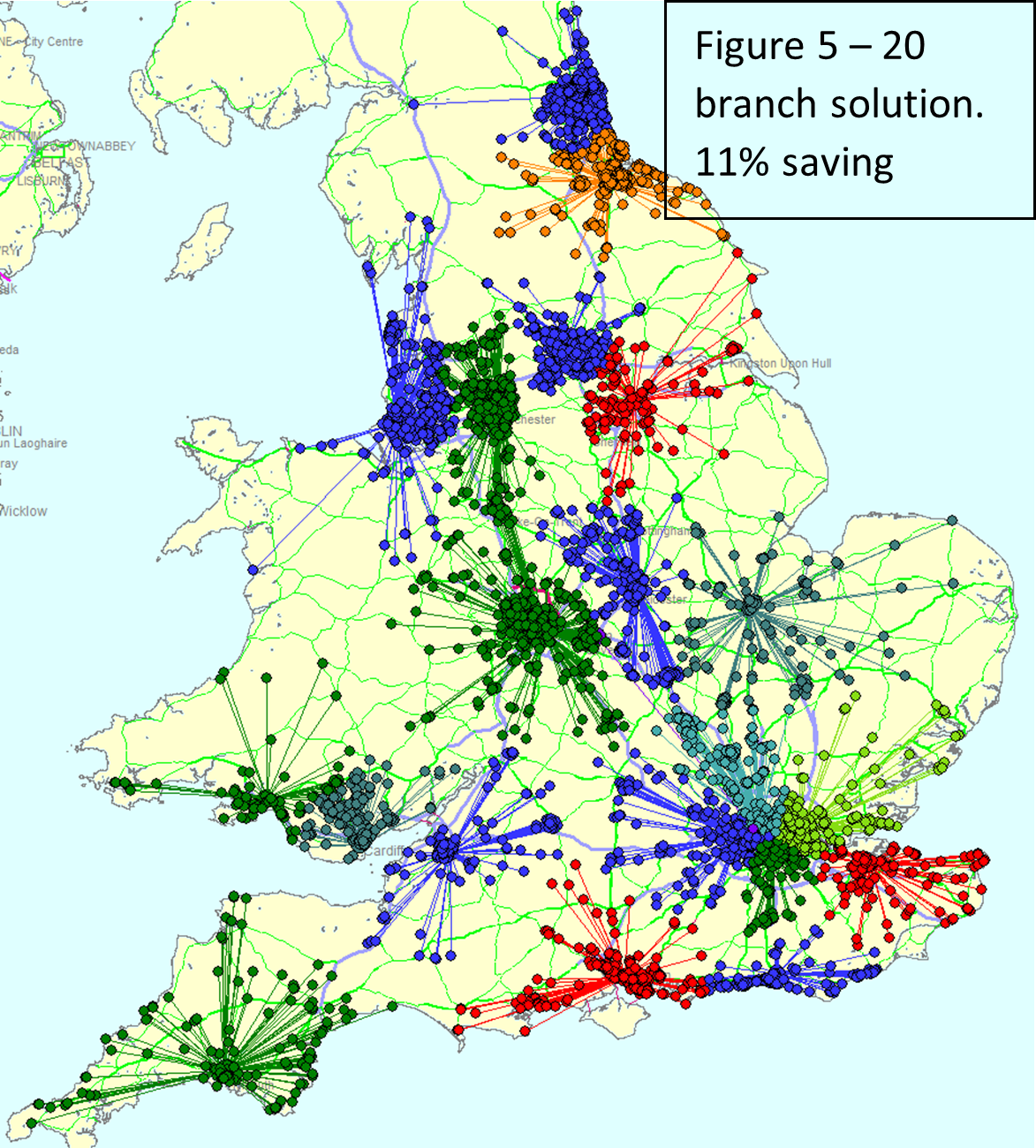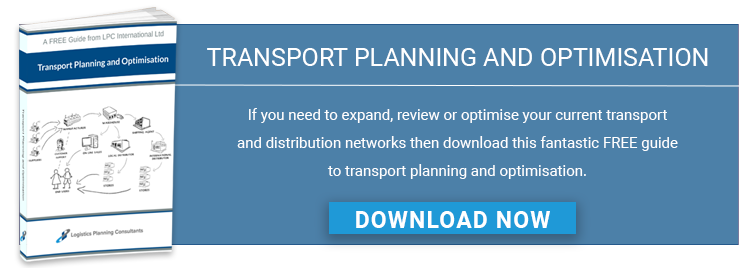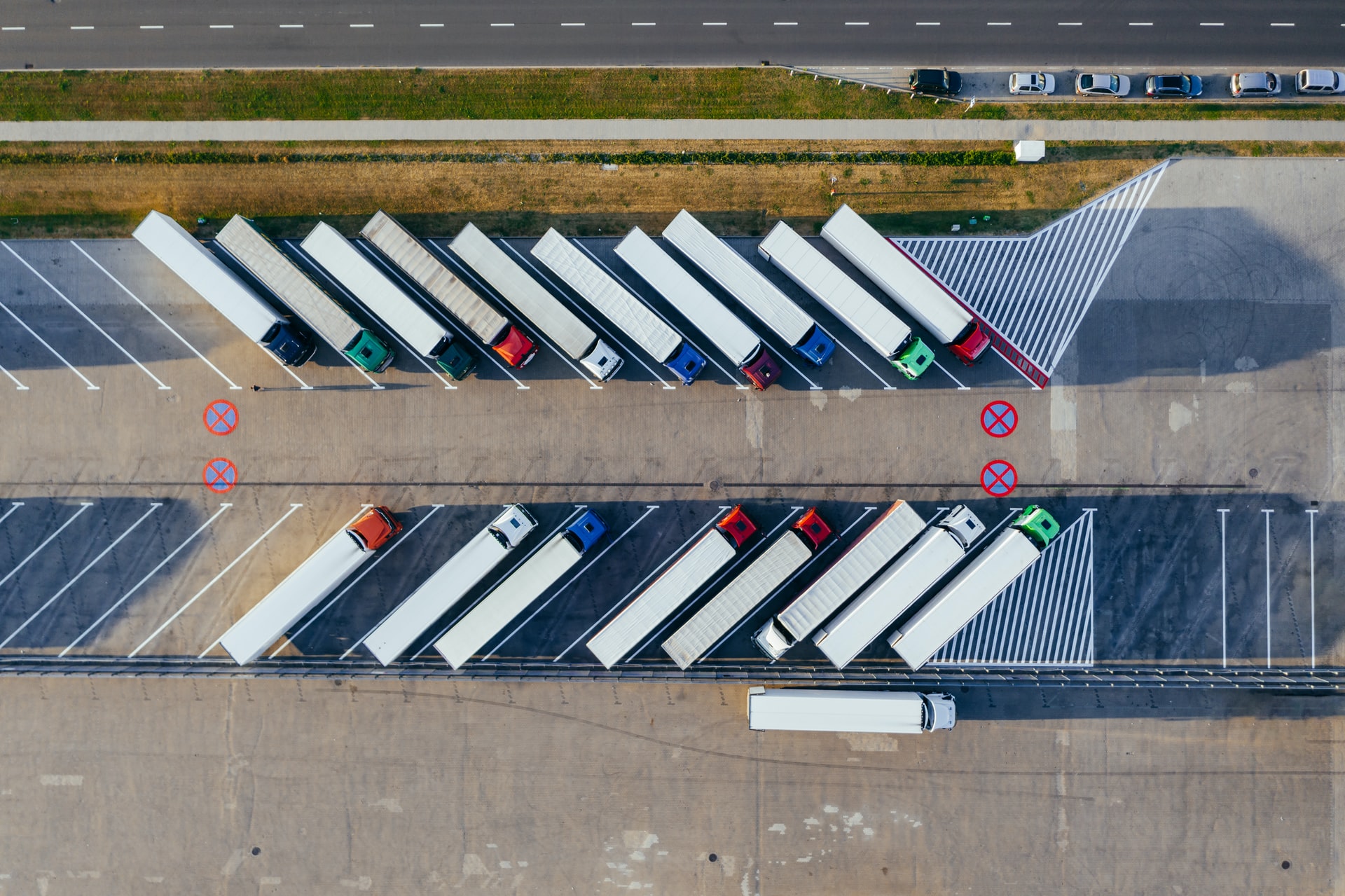
The following article is based on a real study carried out for businesses with country wide sales premises. However, the principles apply to any business with multiple distribution centres than need rationalising.
Target Audience
Any business that can benefit from a rationalisation of its distribution point such as those that have merged with or acquired a competitor or have allowed their distribution operation to grow unchecked.
Benefits
- Reduced delivery costs.
- Reduced property costs.
- Reduced stock holding costs
- Reduced trunking costs
- Increased operational simplicity
In Short
Holding a local delivery fleet at each sales outlet may not be the most efficient and cost effective local distribution solution. This study determined:
- the client’s optimum number of sales branches to deliver from on behalf of all their branches,
- the identity of the branches from which deliveries should dispatched
- the territory each delivery branch should cover and
- the required fleet size and profile at each delivery branch.
Methodology
The Base Case
The client had recently acquired a rival, leading to multiple stores in certain areas and overlapping delivery territories . Figure 1 illustrates the existing areas covered by each of the 50 branches.
A routing and scheduling model was created with historical delivery data to accurately represent the existing operation. The fleet, drivers and mileage were costed to determine a Base Case cost.
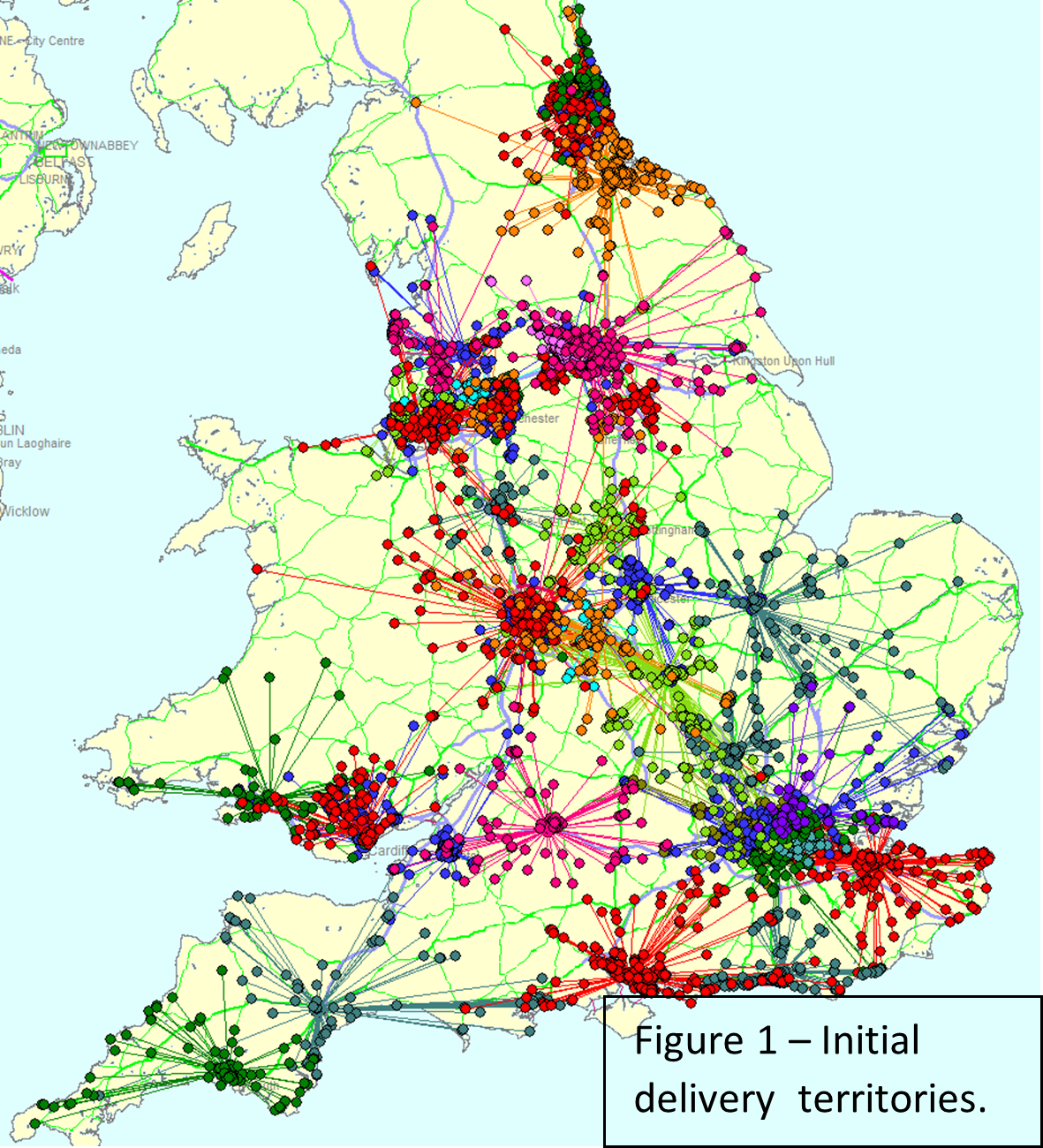
The Starting Point
The starting point was to see what could be done in the short term. Figure 1 above showed considerable overlap suggesting an opportunity with just redefining delivery territories.
The potential savings relative to the base case from optimisation of delivery boundaries was 5%.
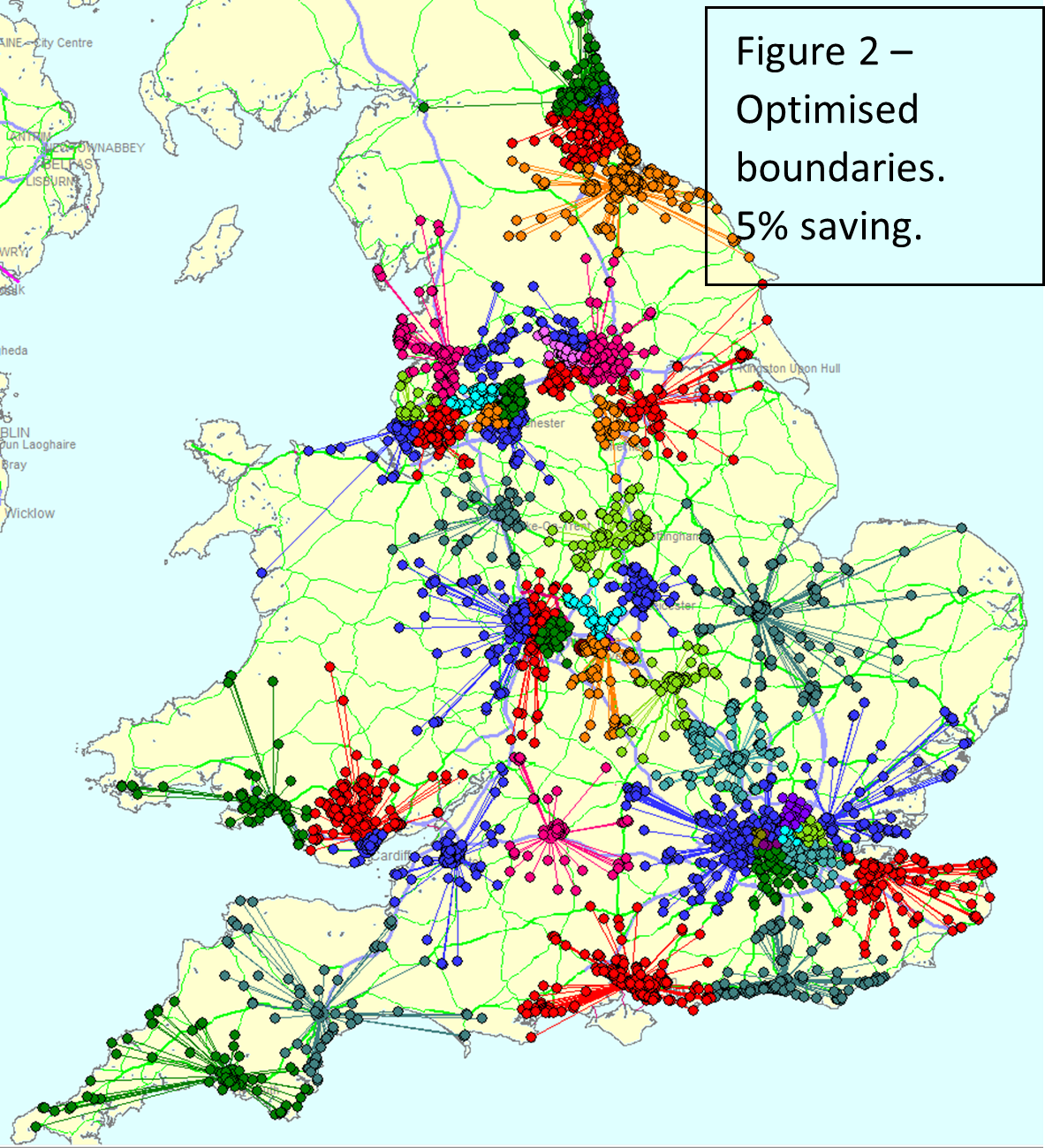
Ten Branch Solution – The Minimum Number of Locations Possible
There were two constraints in this study:
- No branch could exceed 127 tonnes per day throughput.
- All customers had to be reachable within two hours’ driving time.
Figure 3 illustrates the minimum number and location of branches from which all orders could be reached within two hours. The saving in transport costs relative to the base case was 5.5%
However, some branches would exceed the 127 tonnes per day constraint with this arrangement so more delivery branches would be required to meet this constraint.

15 Branch Solution
A 15 branch solution is illustrated in Figure 4. All branches in this solution comply with the 127 tonnes per day constraint.
The expected saving relative to the base case increased to 7%.

20 Branch Solution
A 20 branch solution is illustrated in Figure 5.
The expected saving relative to the base case increased to 11%.
30 Branch Solution
A 30 branch solution is illustrated in Figure 6.
The expected saving relative to the base case was to 9%, a fall from the 20 branch solution indicating that the optimum number of branches to deliver from has been exceeded.
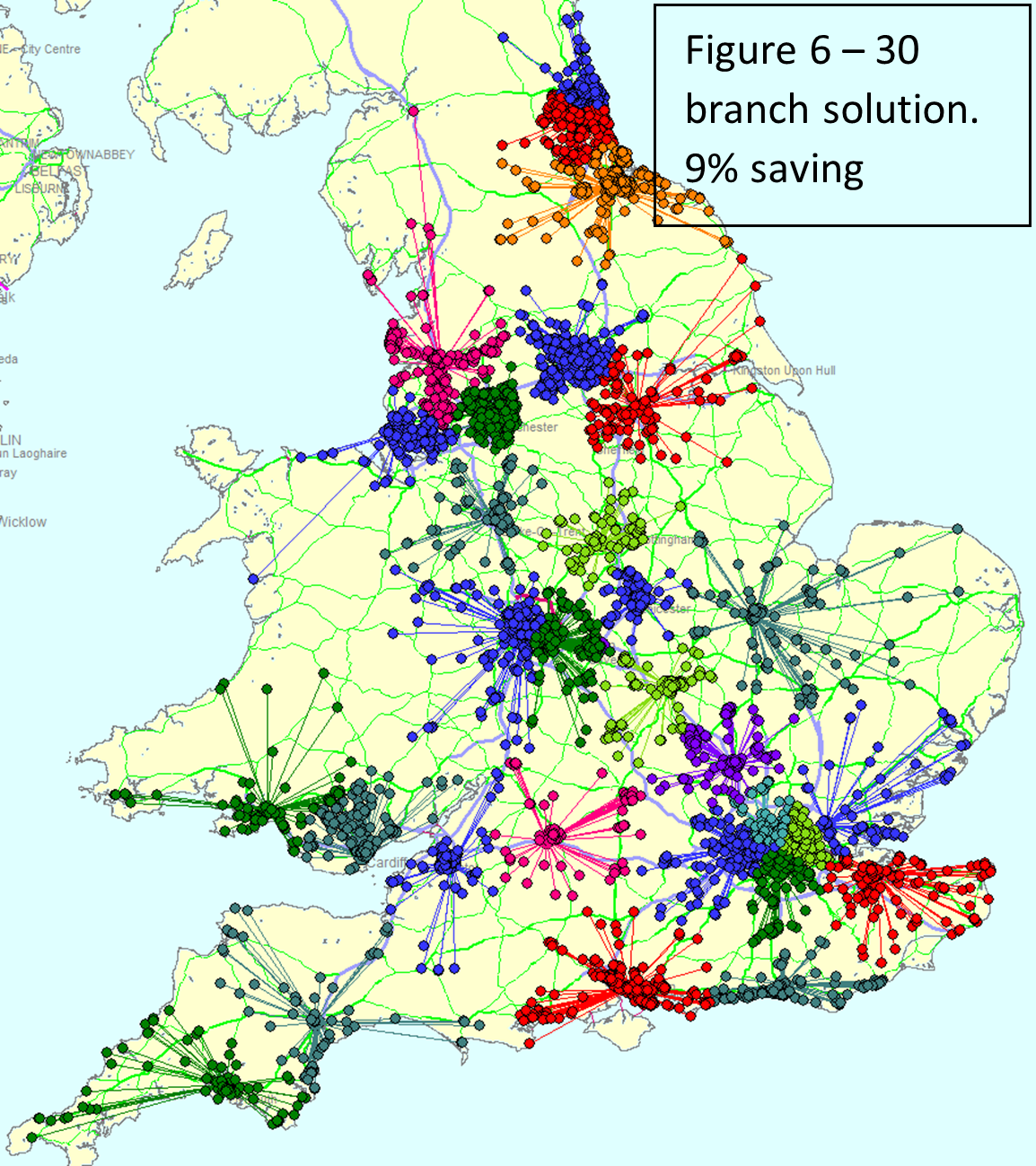
The Optimum Solution
The optimum solution included 23 specific branches from which to deliver on behalf of all 50 branches. The potential saving of this solution is 12% relative to the base case. Figure 7 below compares some of the solutions tested relative to the base case.
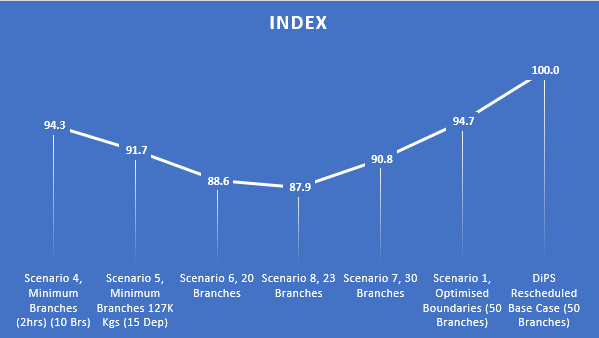
Figure 7.
Image source: Unsplash


